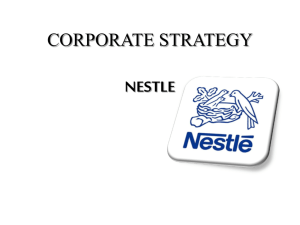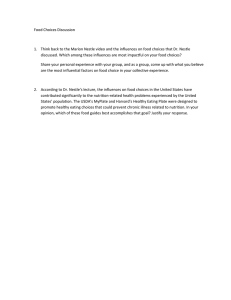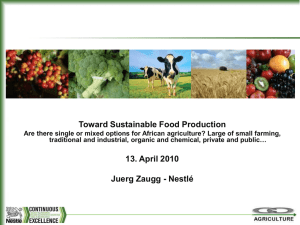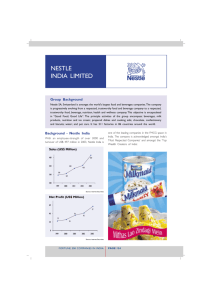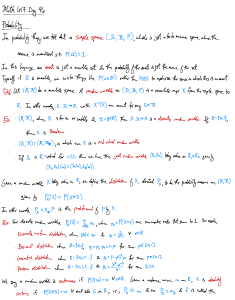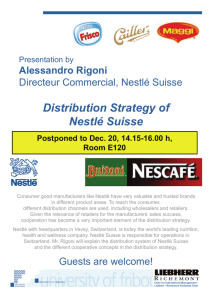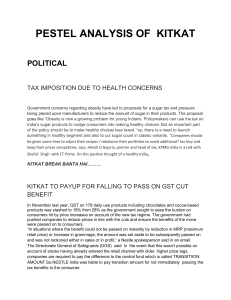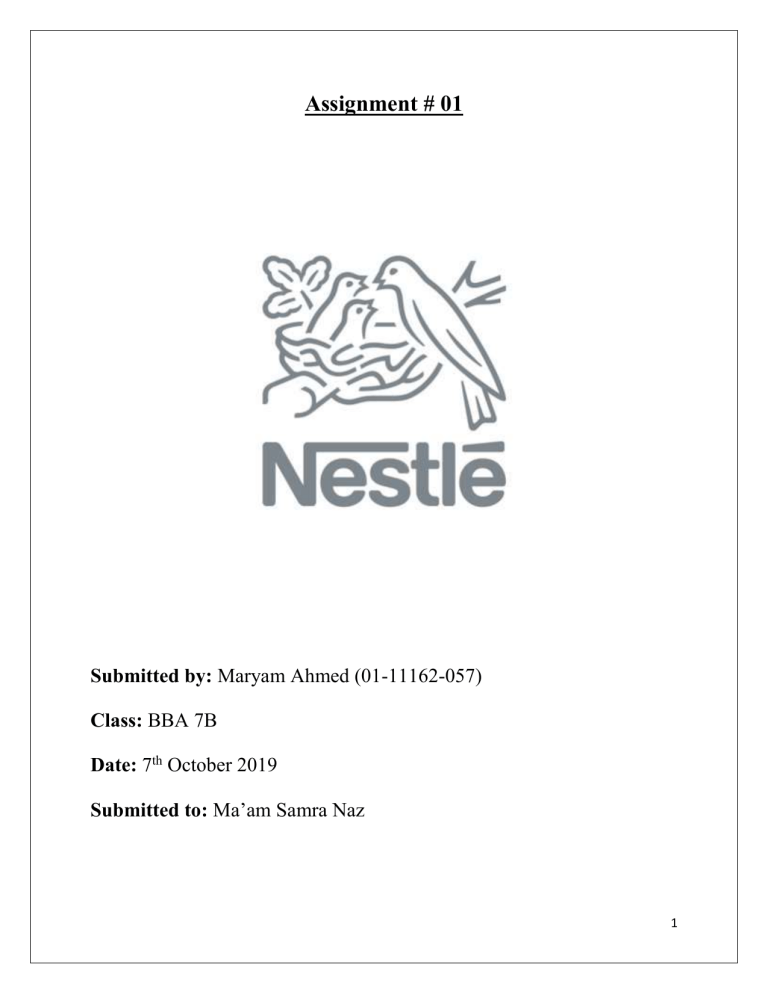
Assignment # 01 Submitted by: Maryam Ahmed (01-11162-057) Class: BBA 7B Date: 7th October 2019 Submitted to: Ma’am Samra Naz 1 History of Nestle The Nestle Company was founded in Switzerland in 1866 by a German pharmacist, Henri Nestlé. He started it off by creating an infant food product as an alternative to breastfeeding. By late 19 th century Nestle had expanded to Europe and some parts of Asia, selling its products in Sweden, Serbia, Netherlands, UK, Russia, etc. In 1905, Nestle then merged with its rival, Anglo-Swiss Milk Company, forming what it known as Nestle Group today. Over the years Nestle has become a global brand and is the world's leading Nutrition, Health and Wellness company by acquiring many companies over the years like Maggi, Friskies, Herta, Perrier etc. and even became a major shareholder in French leading cosmetic company L’Oréal. How Nestle became global By 1868, Nestlé was already operating in France and in Germany. Early on, Nestlé pushed its business overseas, and it opened its first American factory in 1900 and then expanded to other areas of the USA by the merger with the Anglo-Swiss Milk Company. The outbreak of World War I led to rich government contracts for condensed milk and chocolate. In response to an increase in import duties in Australia (Nestlé’s second largest export market), the company decided to begin manufacturing there in 1906 through acquiring a major condensed milk company, the Cressbrook Dairy Company, in Brisbane. By 1913, the Company was operating factories in Singapore, Hong Kong, Calcutta, Bombay, Colombo and so on. In 1938, the company’s factory in Brazil led to the invention of Nescafé, the first commercial product for instant coffee. By the end of the war, Nestlé had 40 factories around the globe. During World War II, the Swiss company’s global operation supplied both sides of the conflict. Nestlé won a contract to feed the German Army, and the food giant’s American factories sold Nescafé to the United States military. Nestlé’s growth accelerated after World War II. In 1947, the company merged with Maggi, the maker of the Fondor seasoning brand. It was followed by the acquisition of: Crosse & Blackwell (a British maker of preserves and canned foods) in 1960, Findus frozen foods in 1963, Libby’s fruit juices in 1971, Stouffer’s frozen foods in 1973. 2 In the 1970s, Nestlé executives predicted a sluggish future for the food industry and diversified into cosmetics and pharmaceuticals. The company acquired a stake in L’Oréal, the world’s No. 1 cosmetics company, and bought Alcon Laboratories, the No. 1 company in eye care products. In 1988, Nestlé spent $5.5 billion to buy the pasta giant Buitoni and the British chocolate maker Rowntree. And in 1992, the company won a battle for Source Perrier, the world’s leading mineral water company. In 2002, Nestlé struck a $2.6 billion deal to buy the maker of Hot Pockets and Toaster Pizza snacks. How it is creating interdependence between states In general, the company’s strategy has been to enter emerging markets early before competitors and build a substantial position by selling basic food items that appeal to the local population base, such as infant formula, condensed milk, noodles, and tofu. By narrowing its initial market focus to just a handful of strategic brands, Nestlé claims it can simplify life, reduce risk, and concentrate its marketing resources and managerial effort on a limited number of key niches. By pursuing such a strategy, Nestlé has taken as much as 85 percent of the market for instant coffee in Mexico, 66 percent of the market for powdered milk in the Philippines, and 70 percent of the market for soups in Chile. As income levels rise, the company progressively moves out from these niches, introducing more upscale items, such as mineral water, chocolate, cookies and prepared products. Nestle is creating interdependence between states in a way that it buys cocoa beans from Ghana for its chocolate and coffee products which are consumed all around the world in the form of Kit Kat, Nescafe coffee etc. Nestlé’s role in globalization Globalization has caused remarkable changes to the business practices around the world. Geographical expansion of Nestle was a result of many mergers and acquisitions. Nestle has made over 50 acquisitions since 1985. Initially, Nestles’ growth strategy used acquisitions to diversify the company’s product offering. Then, in the early 1990s, it used acquisitions to expand geographically. More recently, it has focused its acquisitions on growing a selective number of 3 very attractive businesses in different geographical markets where it can achieve leadership positions. Since the year 2003, it has made 31 acquisitions. Nestle was losing market share in the developed countries at a fast pace due to increasing competition. As a result of this, the company decided to shift its focus from developed to developing countries. Because of the geographical expansion of the company, its focal point shifted from the national market to the global market. This shift was driven by important changes in their management team that lead to new and different practices of managing and organizing production and distribution processes of goods globally. Nestle outsource professionals from different parts of the globe, causing job shifts and changes in company structures. For example, Nestle was built in Vietnam in order to meet the demands for its Nescafe coffee products, and since then has created more than 200 new jobs in the area. Located in the Dong Nai province, the company manufactures the products and provides them for the local people and also exports them overseas. The American Chamber of Commerce in Vietnam reports that Nestlé trained more than 19,600 coffee farmers in Vietnam in 2012. Nestle has a role in cultural globalization in a way that some of its products is available exclusively in some countries e.g. there have been more than 300 limited-edition seasonal and regional flavors of Kit Kat chocolate bars produced in Japan since 2000. Nestlé, which operates the Kit Kat brand in Japan, reports that the brand overtook Meiji Chocolate as the top-selling confection in Japan from 2012 to 2014. 4
